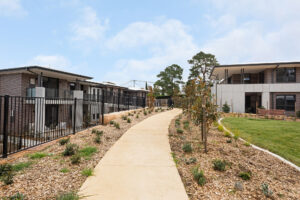The Royal Commission inquiry followed by the bushfires, the long-running drought, and then the Covid-19 have all had a severe impact on the sales of Retirement and Aging places.
Bucking that trend, some providers reported soaring sales figures and unprecedented demand. Upon close scrutiny one realised it was their product which was uniquely placed to address one of the highly distressing aspects of ageing – physical and social displacement.
These care offerings combine the freedom of Retirement living with the care and attention delivered in an Aged Care Facility. Best of both worlds! We refer to this as a Hybrid care product as it affords the resident their much-valued freedom of movement and the ability to maintain the social connections that become valuable as they age.
We are talking of delivering higher levels of care in the same home as the needs change. Ageing in place in the true sense. This is sometimes confused with the resident moving to a new accommodation within the same campus which again is seen as displacement in many ways.
It is well established that disconnection with their familiar social setting is a prime cause of aggravated mental degeneration in elderly people. The ability to see the familiar faces of the immediate neighbours, the local butcher, baker, or newspaper agent have proven to act as cues for the memory which enhances independence, which in turn becomes a vital social requirement with age. Not to mention the added ability for partners with varying care needs to continue to stay under the same roof.
Designing a space to allow for this to occur brings about its own set of exciting opportunities as well as challenges especially in regard to NCC code compliances due to the dual nature of the combined space. We are finding it prudent to apply the more stringent of the two-building class requirements while utilising some benefits from the less onerous Class without compromising on the health and safety aspects of the occupant- be it resident, staff or carer.
With this concept being fairly unexplored, every project requires an in-depth assessment from the certification point of view.
The first of the flagship projects for any provider also involves a detailed scrutiny of the existing operational model and an overhaul of the existing protocols and systems to allow for a combination product to be successful. In-depth study and exploration of the new directions in the early conceptual phase can clearly set up a basis for innovation and strategic thinking to explore fresh ways in which integration can occur.
We are excited about the possibilities these hybrid design concepts can bring to aged care environments. If you would like to know more or have some thoughts on this topic, contact Mahi Lau at Stanton Dahl Architects.

